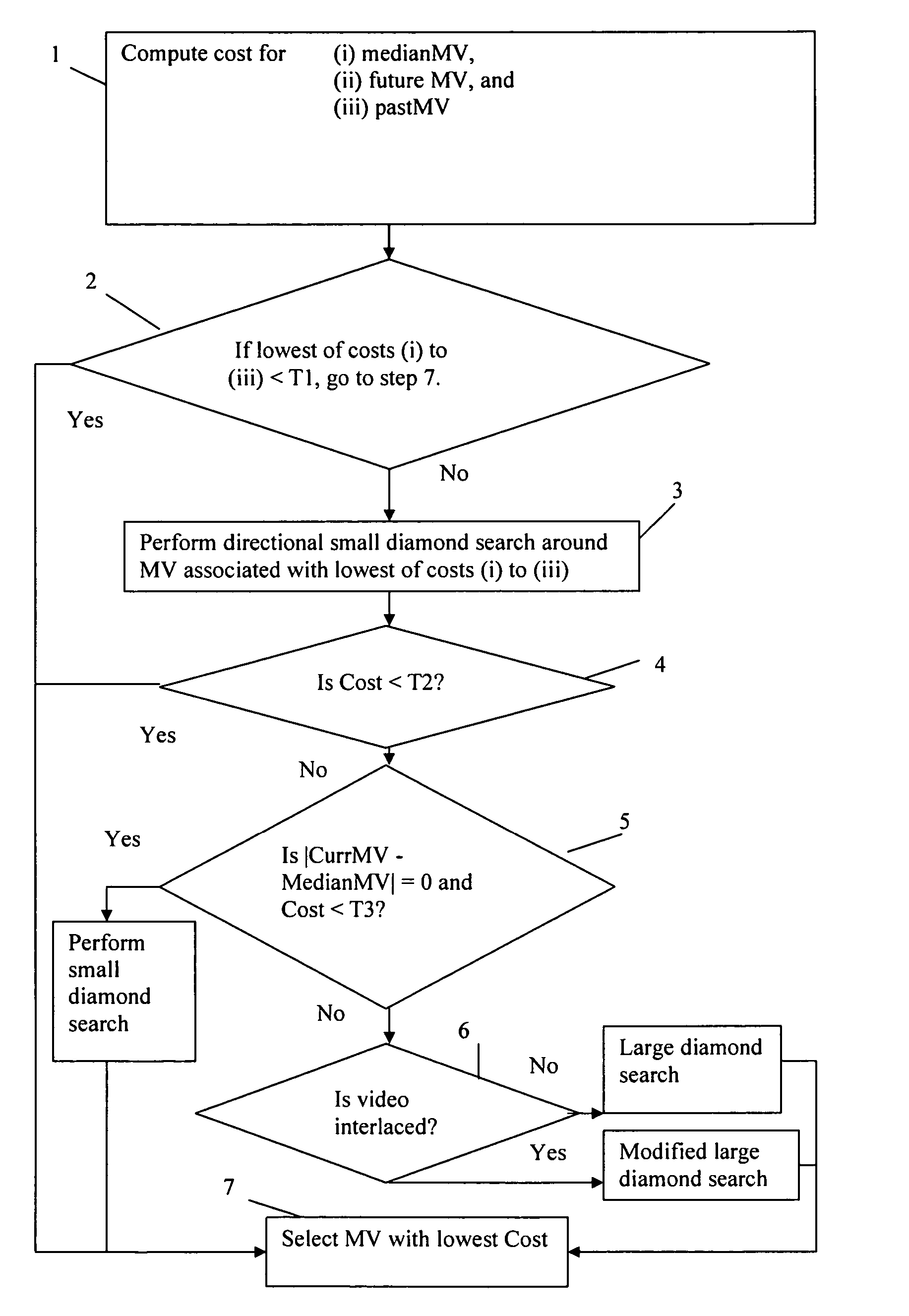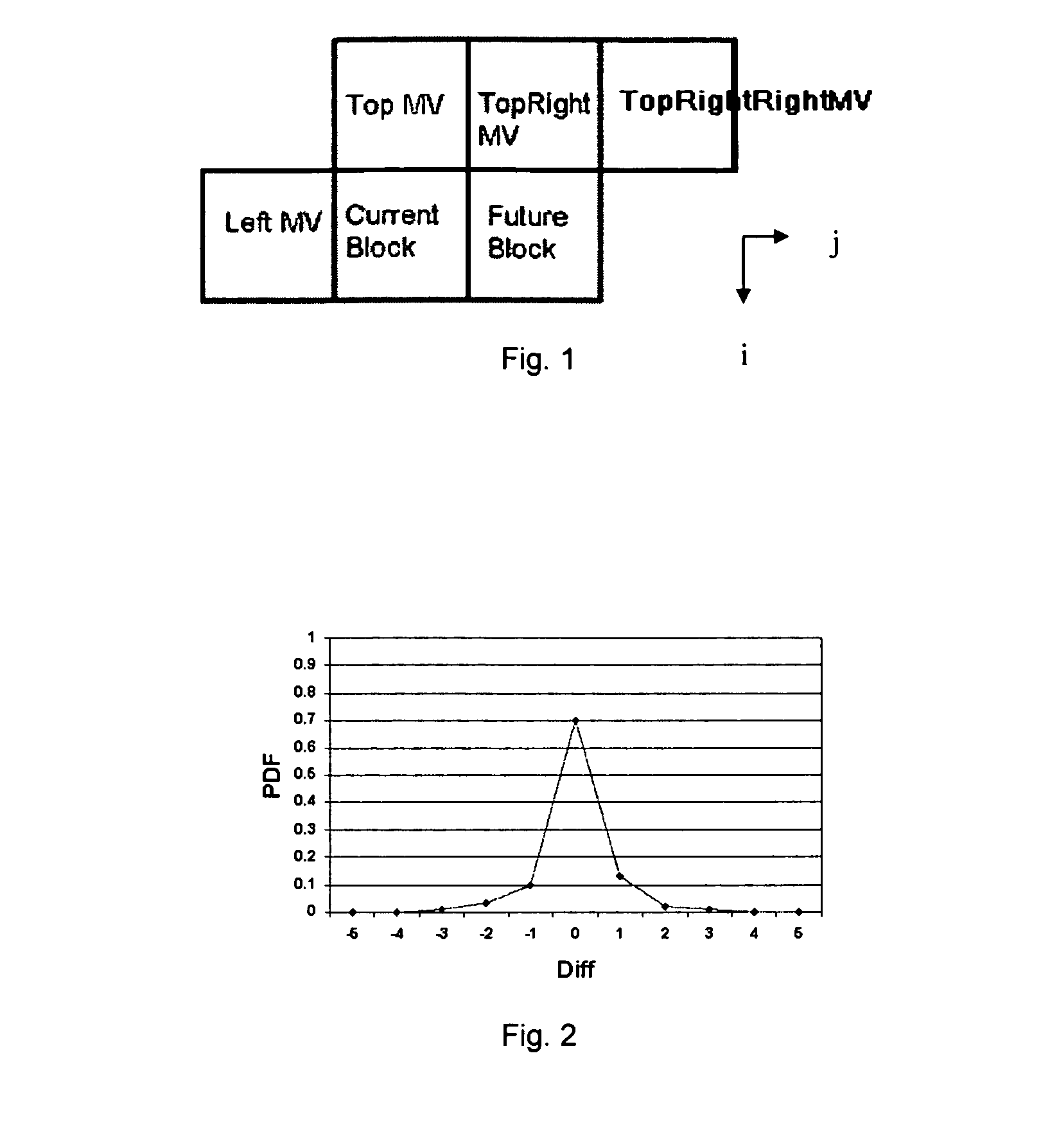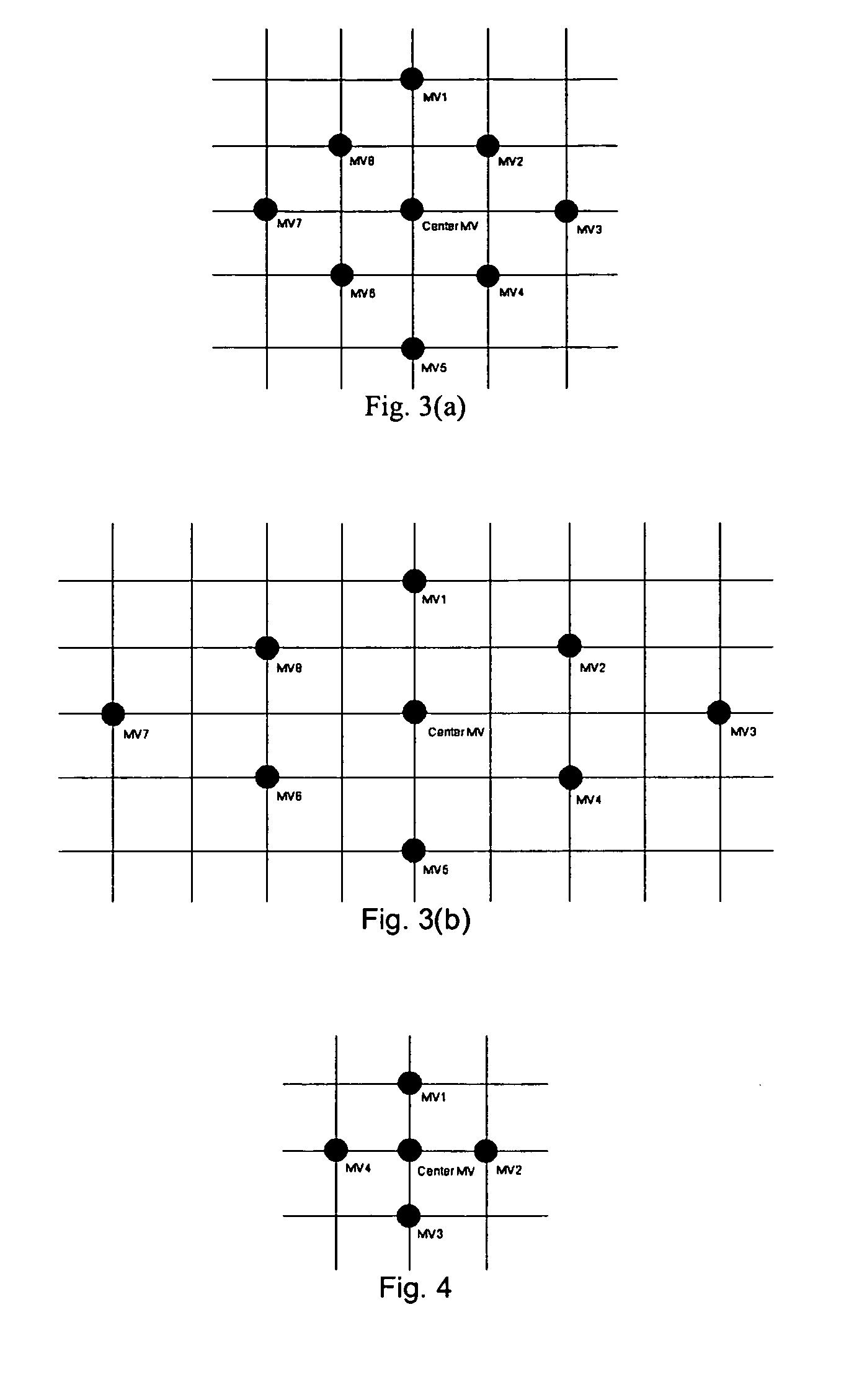Enhanced block-based motion estimation algorithms for video compression
a motion estimation and block-based technology, applied in the field of digital signal compression, coding and representation methods and systems, can solve the problems of consuming huge computation power in the video encoder, and a large number of peopl
- Summary
- Abstract
- Description
- Claims
- Application Information
AI Technical Summary
Benefits of technology
Problems solved by technology
Method used
Image
Examples
first embodiment
[0035] the invention employs many features of the PMVFAST algorithm, but improves upon PMVFAST (and other existing algorithms) by considering a few neighboring blocks instead of just one block. Eqn. (2) and (3) show that the choice of the MV of the current block directly affects the RD cost of the neighboring blocks, including the right block (or the (i, j+1)th block), the lower-left block (or the (i+1, j−1)th block), and the lower block (or the (i+1, j)th block). This is because the current MV would affect the predicted MV of these neighboring blocks and thus in turn affect the optimal motion vectors for those blocks. These are “future” blocks as motion estimation has not been performed on them when the current block is processed. We cannot compute the optimal motion vector of these future blocks concurrently with the current block because this we would require computing the optimal motion vectors for all the blocks in the whole frame simultaneously as in Eqn. (2), which would incu...
second embodiment
[0076] We now turn to the invention, which illustrates the second aspect of the invention.
[0077] As described above, conventional full integer pixel allows motion vectors to take on location values in each direction of −2.0, −1.0, 0, 1.0, 2.0, etc. In the second embodiment of the invention, the possible location values are selected to be close to the predictor. For the location value which is nearest to 0, we can use (instead of 1.0) another location value such as 0.85 such that the allowable location values would include −2.0, −0.85, 0, 0.85, 2.0, etc. The advantage of this is that statistically motion vectors tend to be close to 0. And thus by choosing the location closer to 0, we would be closer to the true motion vector and thus can give better motion compensation that can lead to higher compression efficiency. Similarly, the other location values can be changed. As an example, the location value of 2.0 can be changed to 1.9 such that the allowable location values would include ...
PUM
 Login to View More
Login to View More Abstract
Description
Claims
Application Information
 Login to View More
Login to View More - R&D
- Intellectual Property
- Life Sciences
- Materials
- Tech Scout
- Unparalleled Data Quality
- Higher Quality Content
- 60% Fewer Hallucinations
Browse by: Latest US Patents, China's latest patents, Technical Efficacy Thesaurus, Application Domain, Technology Topic, Popular Technical Reports.
© 2025 PatSnap. All rights reserved.Legal|Privacy policy|Modern Slavery Act Transparency Statement|Sitemap|About US| Contact US: help@patsnap.com



